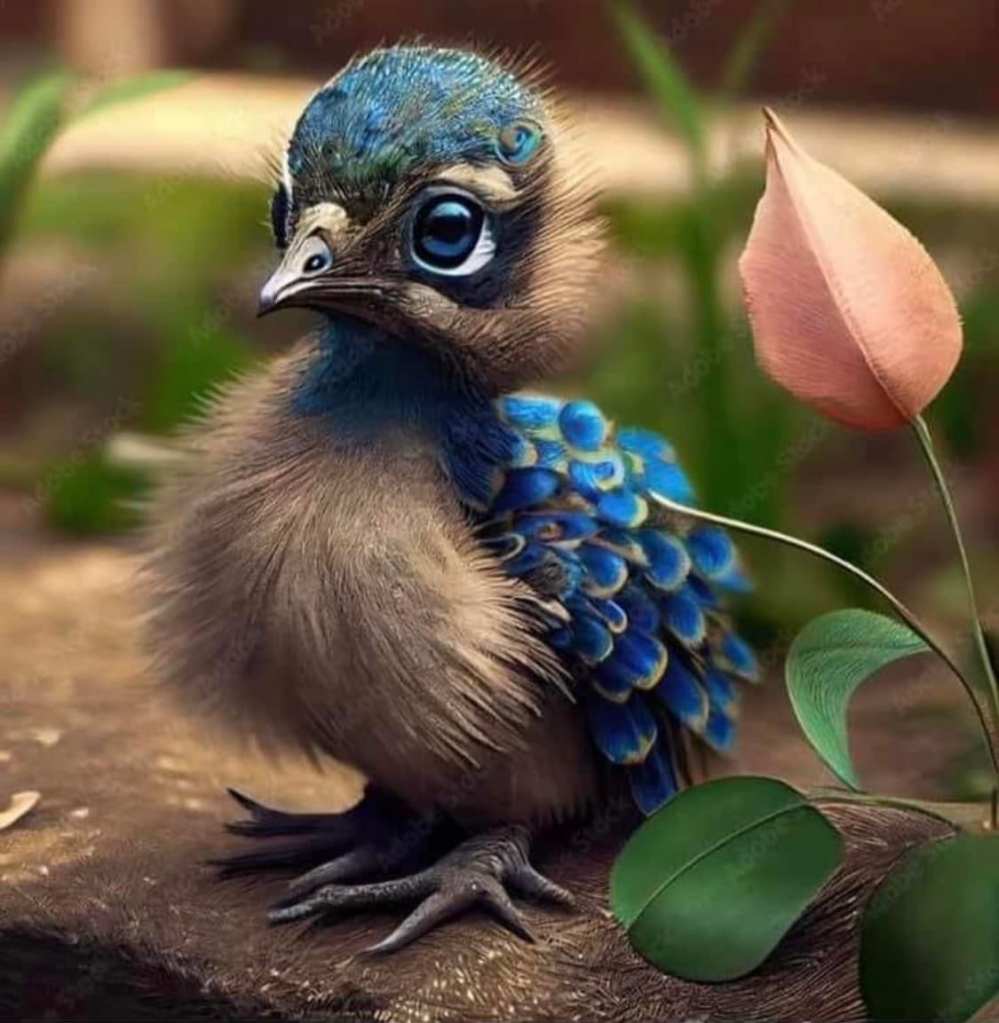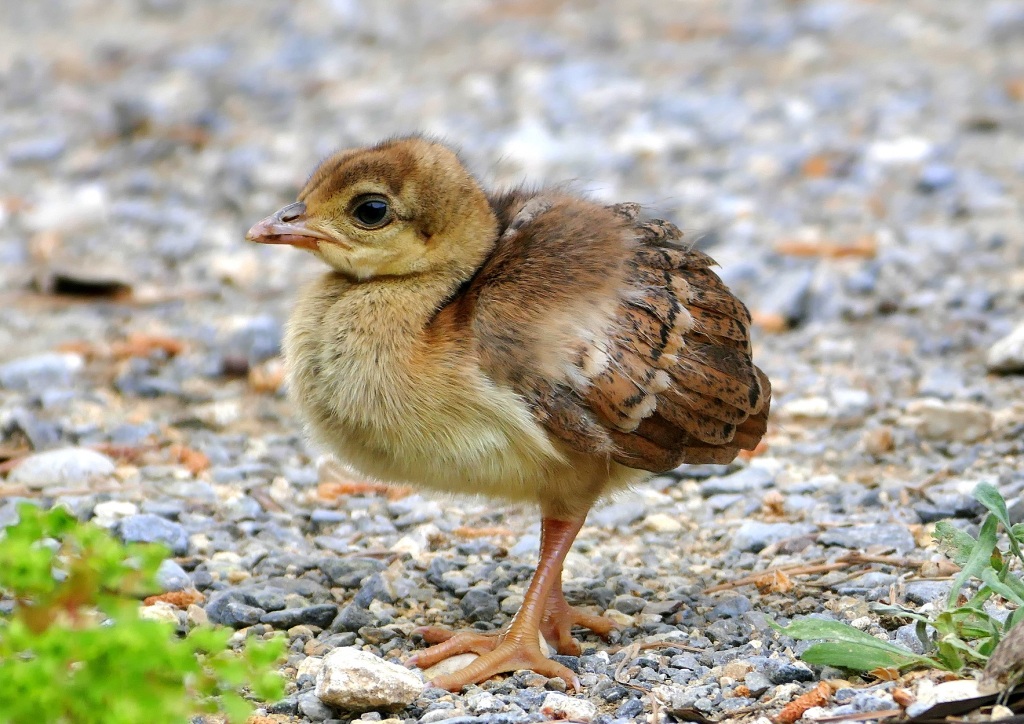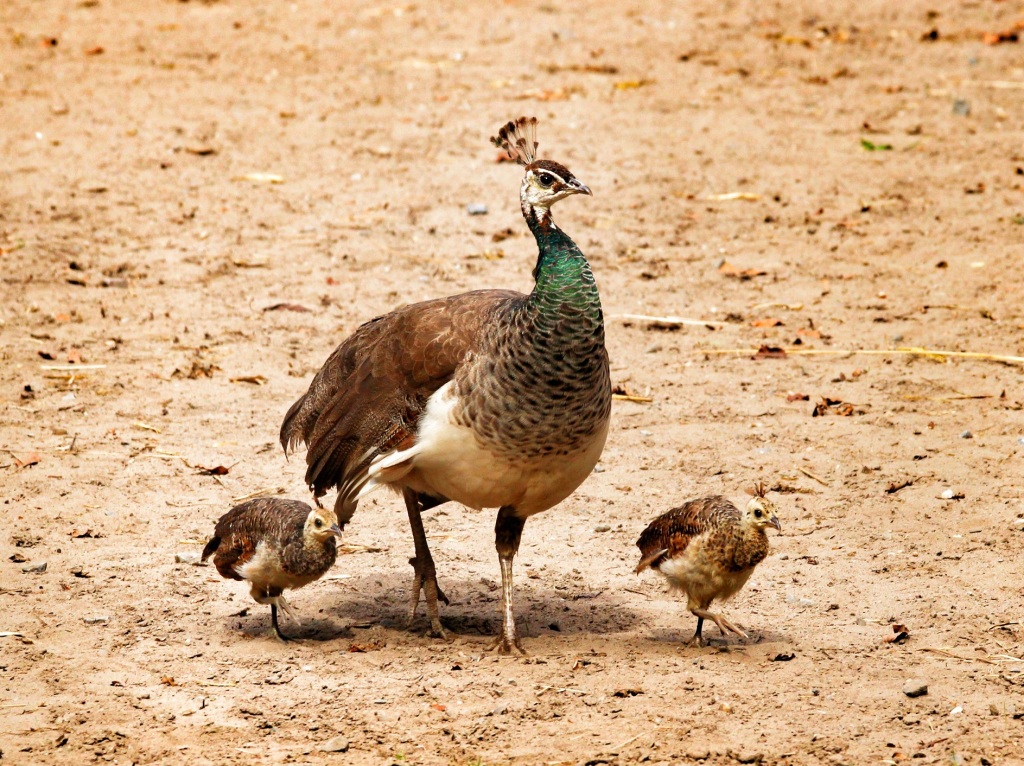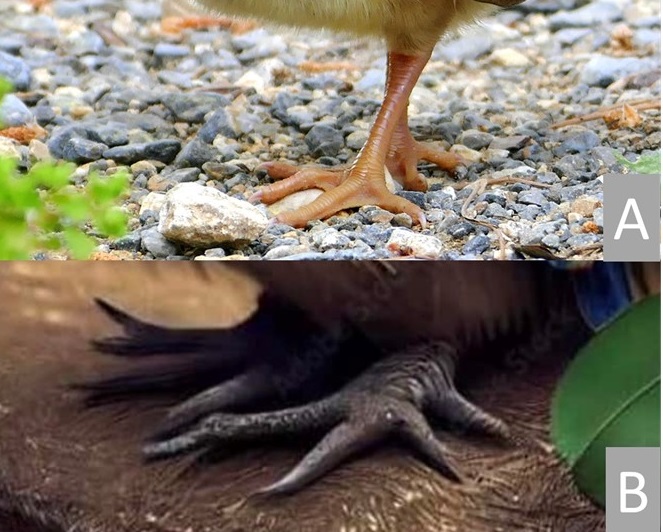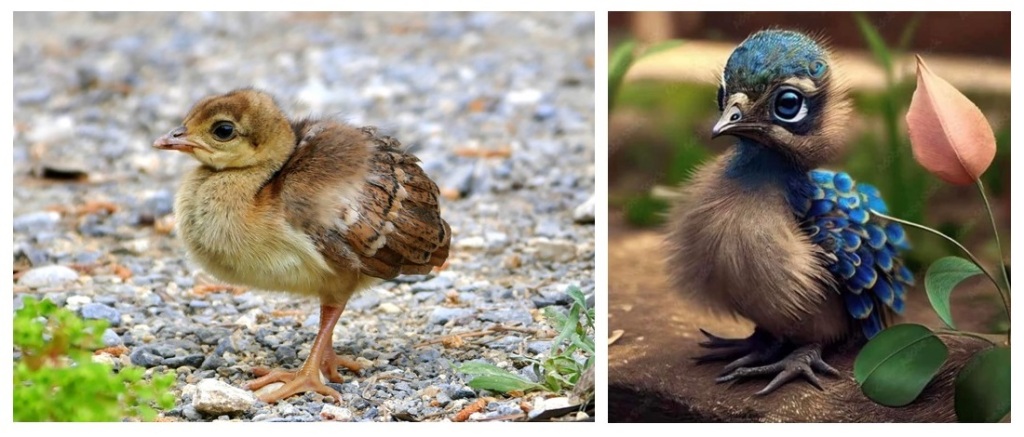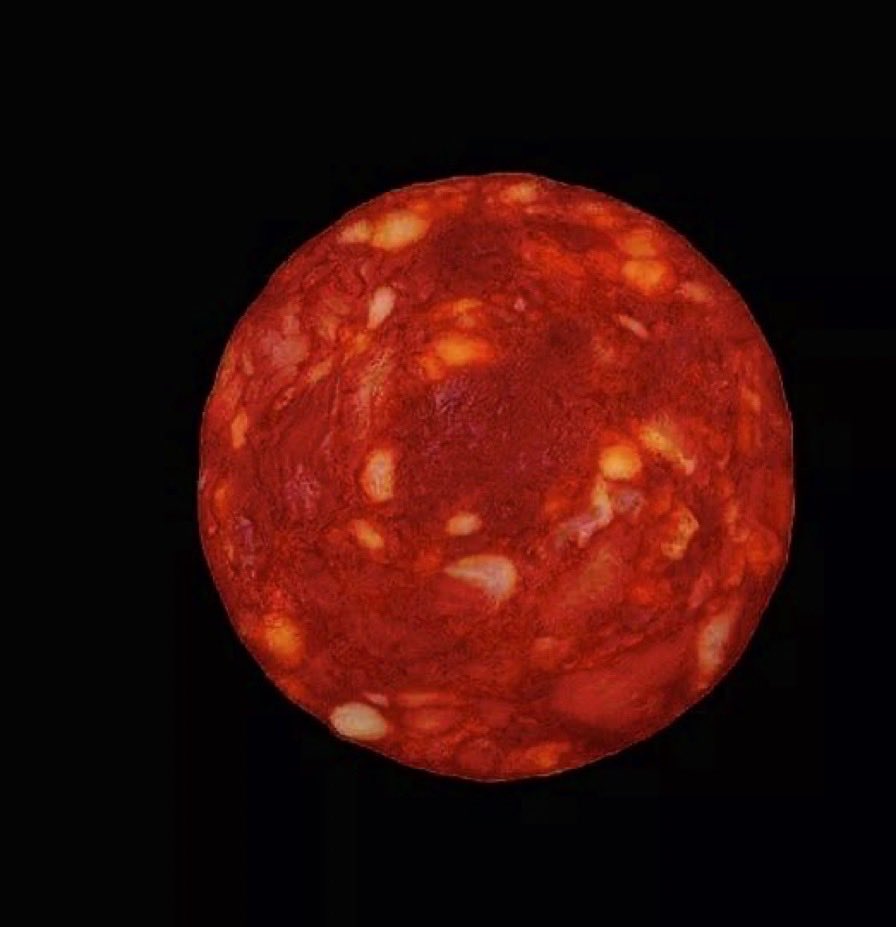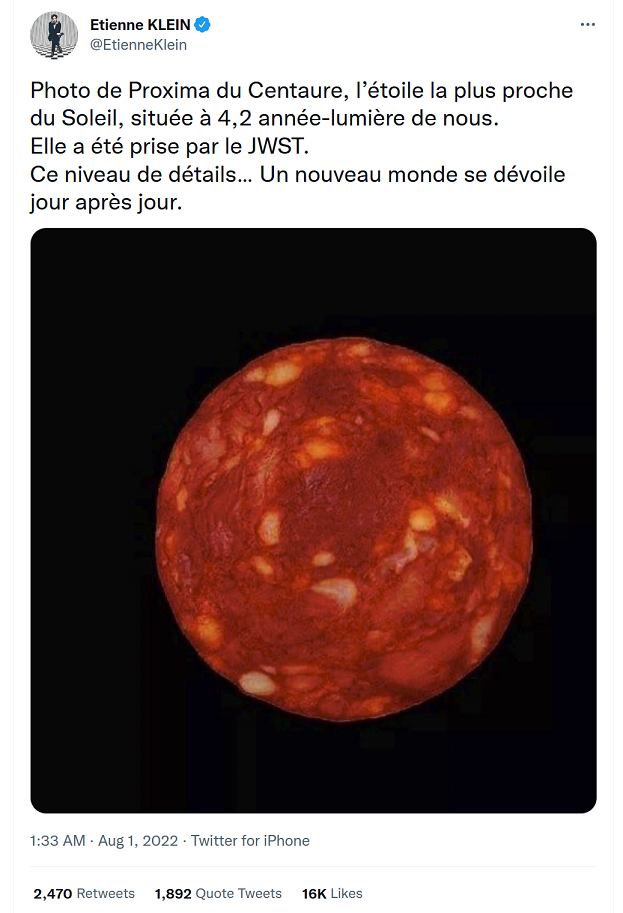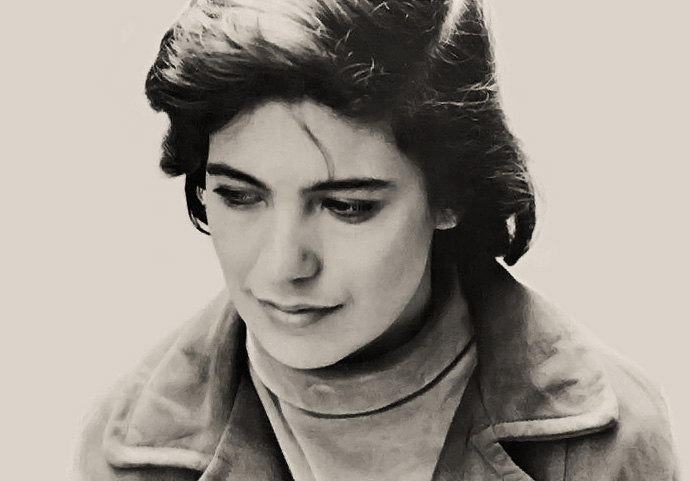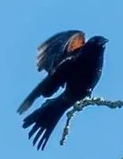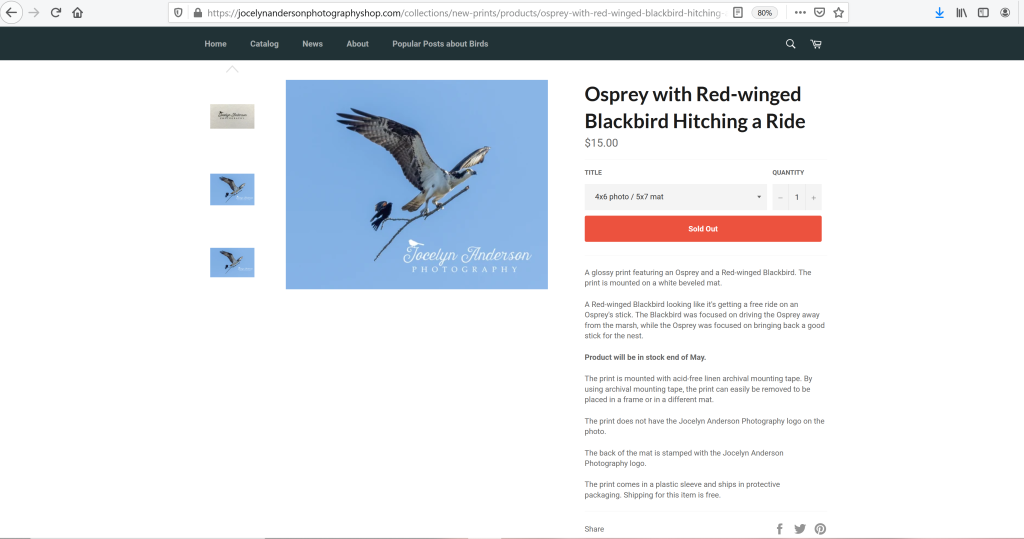Today I saw a disturbingly cute image on Facebook.
I’ve never seen a baby peacock before, so for a few seconds I thought it was a real photo in soft focus. Does it look like a baby peacock to you? It doesn’t look far from what I might have thought a peachick might look like if I’d ever given it any thought before. But then of course I thought, this can’t be right.
But knowing something isn’t right and demonstrating that it isn’t right are two different things. I searched online for photos of peachicks, and found surprisingly few. I guess that it is more common to take photos of the handsome adults. Though I only found tiny peachicks with modest plumage, I couldn’t be sure there wasn’t a stage when the feathers grew out like those of Baby Peacock. But then I looked at the eye shape of the gallery of peacocks I’d found, for example Rolf Brecher’s photo below. Compared to Baby Peacock, the fledglings’ eyes were far less round and smaller overall. Clearly the image I was investigating was manipulated, at least in respect of the eye shape. And of course exaggerated round eyes are popular these days – think Manga, where over-large eyes facilitate emotive meanings.
The older peachick photos I found to compare to Baby Peacock sported only tan and beige camouflage feathers. I idly thought that Hans Christian Anderson would have been better off choosing a peachick to feature in his story The Ugly Duckling, because these baby birds certainly demonstrated little evidence of the beauties they would grow to be! By contrast with the somewhat drab and awkward appearances of maturing peachicks like those in the Christian Stobbe photo below, the peachick plumage in Baby Peacock gave an overall impression of having been elaborately groomed in a professional salon, like Cristiano Ronaldo going to the World Cup after-party. The feathers were modified also.
So, the evidence suggests that Baby Peacock is either a fake photo, a manipulated image, or a rather impressive computed image. Certainly it is not a photograph in the true sense of the word.
Manipulated or machine learned?
If not a photograph, then the other possibilities are an image that has been ‘Photoshopped’ or completely generated by computing. Was there a way to figure out where Baby Peacock came from? Some provenance of any kind? Perhaps Google’s image search tool could help.
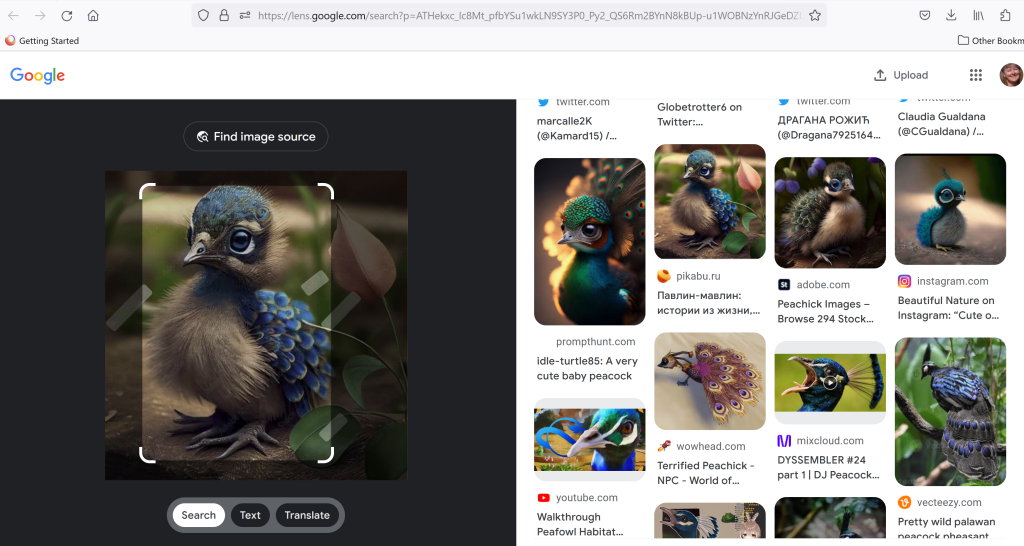
Hmm, that was helpful! Not only did the tool find a copy of the image, it found several, plus some similar images, from which I was eventually able to identify Baby Peacock (via adobe.stock.com) as the work of an artist named Hatoru.
Visiting Hatoru’s Adobe Stock Images page [5], it quickly becomes obvious that Baby Peacock is one of several computational images created by Hatoru. A particularly noteworthy giveaway of AI-generated images is extra appendages, and, in looking closely, Baby Peacock has a visible extra (misplaced) toe on its left foot. The right foot looks rather suspect too with toes that appear forked like a snake’s tongue.
Other images in Hatoru’s series of baby birds suffer similar problems with their feet. I have not been able to learn anything more about Hatoru at all. I don’t even know if Hatoru is a person or organisation. This is unfortunate, because it makes it difficult to simply reach out and ask, or to attach useful provenance to the image to enlighten future viewers. One thing that’s obvious from Hatoru’s body of work: a joy in generating fanciful images of baby birds!
Real or Fake?
Conclusion? Baby Peacock is an image generated through computation. Not a real photo, though certainly a real computer-assisted creative work. Lovely in its own way.
However, though I must say that though this image has entertainment value, and art is an important part of our lives and society, the real photograph of a peachick this search produced is so much more meaningful and compelling. I think baby peacocks are beautiful just as they are. I’m sure their parents think so too. Which one do you like better?
References
[1] Image entitled ‘Baby Peacock’ posted on my Facebook page by a friend. No provenance provided. Upon investigation identified as Hatoru (date unknown) https://stock.adobe.com/contributor/211290107/hatoru?load_type=author&prev_url=detail&asset_id=571212905 Used under fair use provisions of copyright law. Accessed 8 July 2023
[2] Rolf Dietrich Brecher from Germany, CC BY-SA 2.0 (2015) https://creativecommons.org/licenses/by-sa/2.0, via Wikimedia Commons https://commons.wikimedia.org/wiki/File:Baby_Peacock_%2818131813108%29.jpg Accessed 8 July 2023
[3] Christian Paul Stobbe (2020) https://unsplash.com/photos/sIyqGNExcDE Accessed 9 July 2023
[4] Screen capture of Google Image search using [1] above.
[5] Sabrina Caldwell (2023) Zoom-in and compare, peachicks’ feet in [2] and [1] above.
